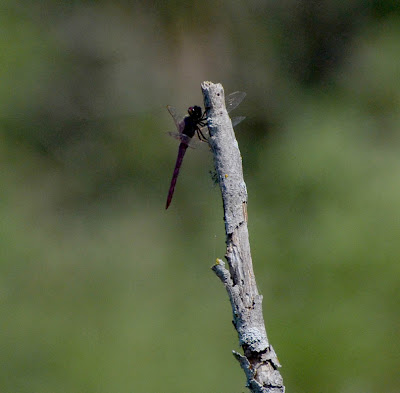Friday, August 31, 2012
San Antonio River, King William Historic District Segment,
S Alamo St to Old Guilbeau St and back
Today's photos:
The last time I walked this section of the San Antonio River was on Friday, March 9, right after a late winter cold front had moved into the area. The weather that day was rather brisk for a walk. Today was much more comfortable, if still a bit hot.
As I mentioned in the March 9 post, this section of the river is concrete channeled with manicured parkland along the banks. In other words, it is very urban rather than the more natural environment of the Mission Reach.
In keeping with the milieu, this series of photos is a contemporary urban perspective on the wildlife.
Saturday, September 1, 2012
Friday, August 31, 2012
Tadpoles, An Intriguing Snag* and More Woodland Wonders
Thursday, August 30, 2012
This is the second set of photos from my walk yesterday through Bamberger Park and along Leon Creek. When I walked this same area this time last year, the extended pool in the creek was much smaller, barely extending beyond the tree on the left side of the photo below.
This is the second set of photos from my walk yesterday through Bamberger Park and along Leon Creek. When I walked this same area this time last year, the extended pool in the creek was much smaller, barely extending beyond the tree on the left side of the photo below.
Thursday, August 30, 2012
Gayfeather and Other Woodland Wonders
Wednesday, August 29, 2012
Leon Creek Greenway, Bamberger Nature Park Trailhead
from Babcock Rd north to the pedestrian bridge
and numerous natural surface trails in between
Today's photos:
It was hot on my walk through Bamberger Nature Park and along the Leon Creek Greenway today, but the air was crystal clear. It was a beautiful day to be on the trail. It has been a couple weeks since it has rained, but compared to a year ago, the woodland along the creek is especially vibrant now.
Gayfeather (the purple flowers in the first five photos in this series) grow profusely in the rocky limestone soil along Leon Creek. They begin blooming in late summer and continue well into early winter.
Leon Creek Greenway, Bamberger Nature Park Trailhead
from Babcock Rd north to the pedestrian bridge
and numerous natural surface trails in between
Today's photos:
It was hot on my walk through Bamberger Nature Park and along the Leon Creek Greenway today, but the air was crystal clear. It was a beautiful day to be on the trail. It has been a couple weeks since it has rained, but compared to a year ago, the woodland along the creek is especially vibrant now.
Gayfeather (the purple flowers in the first five photos in this series) grow profusely in the rocky limestone soil along Leon Creek. They begin blooming in late summer and continue well into early winter.
Subscribe to:
Comments (Atom)


















































